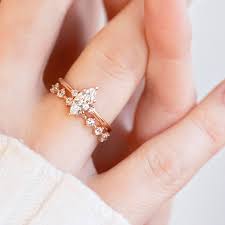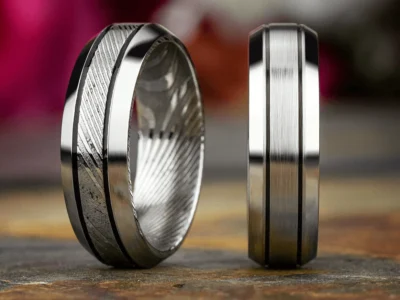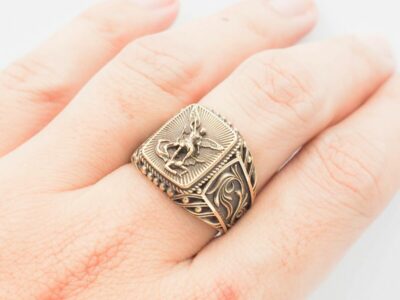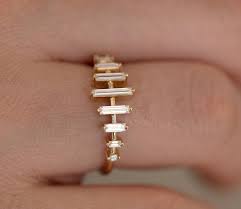Rose gold has gained popularity in jewelry due to its warm and romantic hue. However, there is a common concern about whether rose gold tarnishes over time.
In this article, we will explore the composition of rose gold and the factors that contribute to tarnishing. We will also provide tips on how to prevent tarnishing and debunk common myths surrounding rose gold.
Additionally, we will discuss methods for cleaning and restoring tarnished rose gold and compare its tarnishing properties to other metal alloys. At the end, we will provide a conclusion and answer frequently asked questions about maintaining rose gold jewelry.
Table of Contents
Does Rose Gold Tarnish?
Rose gold is a metal alloy made by combining gold with copper and sometimes silver. The proportion of copper determines the intensity of the pink color, while the gold content determines the purity of the alloy.
Factors Contributing to Tarnishing
Rose gold can tarnish over time due to various factors. Exposure to moisture, chemicals, and even certain body oils can cause the copper in the alloy to oxidize, resulting in a change in the color and appearance of the metal.
How to Prevent Rose Gold Tarnishing
To prevent rose gold from tarnishing, it is important to take proper care and maintenance.
Avoid exposing the jewelry to moisture, chemicals, and body oils, and store it in a dry and clean place when not in use. Regularly clean and polish the rose gold to maintain its shine and prevent tarnishing.
Proper Care and Maintenance Tips
To prevent rose gold from tarnishing, it is important to follow proper care and maintenance tips.
Make sure to remove rose gold jewelry before engaging in activities such as swimming, exercising, or using cleaning chemicals. Store it in a dry and clean place when not in use.
Clean and polish the rose gold regularly using a soft cloth or a mild jewelry cleaner to maintain its shine and prevent tarnishing.
Avoiding Exposure to Certain Substances
To prevent rose gold from tarnishing, it is essential to avoid exposure to certain substances.
Avoid contact with harsh chemicals such as chlorine, bleach, and household cleaners, as they can cause discoloration and corrosion.
Additionally, minimize contact with lotions, perfumes, and other cosmetics, as they can also affect the appearance of rose gold.
Debunking Common Myths about Rose Gold Tarnishing
There are several common myths surrounding rose gold tarnishing. One myth is that rose gold is more prone to tarnish than other metals, but in reality, it tarnishes at the same rate as yellow or white gold.
Another myth is that tarnishing indicates poor quality, but tarnishing is a natural process that occurs with all metals. It is not a reflection of the quality of the rose gold jewelry.
Addressing Misconceptions
Addressing Misconceptions: It is important to dispel the misconceptions surrounding rose gold tarnishing. Tarnishing is a natural process that occurs with all metals, and it is not an indication of poor quality in rose gold jewelry.
Separating Facts from Fiction
When it comes to rose gold tarnishing, it is essential to separate facts from fiction. Some common misconceptions include thinking that tarnishing is a sign of poor quality and believing that rose gold is immune to tarnish.
However, the truth is that all metals naturally tarnish, and rose gold is no exception. Tarnishing is a normal process, and it does not indicate the quality of the jewelry. It is crucial to debunk these myths and understand the realities of rose gold’s tarnishing properties.
Cleaning and Restoring Tarnished Rose Gold
To restore the shine and luster of tarnished rose gold jewelry, it is important to clean it properly. Gentle cleaning methods, such as using a soft cloth or a mild soap and water solution, can help remove dirt and oils that contribute to tarnishing.
Avoid using harsh chemicals or abrasive materials, as they can damage the rose gold. For more stubborn tarnish, professional restoration options, such as ultrasonic cleaning or professional polishing, can be considered.
It is always recommended to consult a jewelry expert for the best cleaning and restoration methods for your specific piece of rose gold jewelry.
Safe Cleaning Methods
Safe cleaning methods for tarnished rose gold jewelry involve using gentle techniques to avoid damaging the metal. This includes using a soft cloth or a mild soap and water solution to remove dirt and oils. It is important to avoid using harsh chemicals or abrasive materials that can harm the rose gold.
Professional Restoration Options
Professional restoration options for tarnished rose gold jewelry typically involve bringing the piece to a professional jeweler or goldsmith. They have the expertise to assess the extent of the tarnish and determine the best techniques to restore the rose gold’s original shine and luster.
Comparison with Other Metal Alloys
When comparing rose gold with other metal alloys, such as yellow gold and white gold, rose gold is more susceptible to tarnishing due to its higher copper content. Yellow gold and white gold have a lower copper content which makes them less likely to tarnish.
Comparison with Yellow Gold and White Gold
When comparing rose gold with yellow gold and white gold, rose gold is more prone to tarnishing due to its higher copper content. Yellow gold and white gold, with lower copper content, are less likely to tarnish.
Durability and Tarnishing Properties
Rose gold, with its higher copper content, is generally less durable and more prone to tarnishing compared to yellow gold and white gold. Regular care and maintenance are necessary to prevent tarnishing and keep rose gold jewelry looking its best.
Conclusion
In conclusion, while rose gold is known for its beautiful appearance, it is important to understand that it is more prone to tarnishing compared to other gold alloys. However, with proper care and maintenance, the longevity and shine of rose gold jewelry can be preserved.
FAQs about Maintaining Rose Gold Jewelry
- How often should I clean my rose gold jewelry?
It is recommended to clean your rose gold jewelry every few months or as needed. Regular cleaning will help remove dirt and oils that can contribute to tarnishing.
- Can I wear my rose gold jewelry in water?
While rose gold is more resistant to tarnishing than other gold alloys, it is still not recommended to wear your jewelry in water. Water exposure can accelerate tarnishing and damage the metal over time.
- Can I use household cleaning products to clean my rose gold jewelry?
No, it is not advisable to use household cleaning products as they can be harsh and abrasive, causing damage to the rose gold. Instead, opt for gentle cleaning methods using mild soap and warm water or specialized jewelry cleaning solutions.
- What should I do if my rose gold jewelry becomes tarnished?
If your rose gold jewelry becomes tarnished, you can try using a soft cloth or a jewelry cleaning solution specifically formulated for rose gold to restore its shine. If the tarnish persists, it may be best to seek professional restoration services.
- How can I store my rose gold jewelry to prevent tarnishing?
To prevent tarnishing, it is important to store your rose gold jewelry in a cool, dry place away from direct sunlight. Avoid storing them alongside other metal jewelry to prevent scratching and potential chemical reactions.
Remember to periodically check your rose gold jewelry for any signs of tarnishing and take the necessary steps to maintain its shine and longevity.







Comments